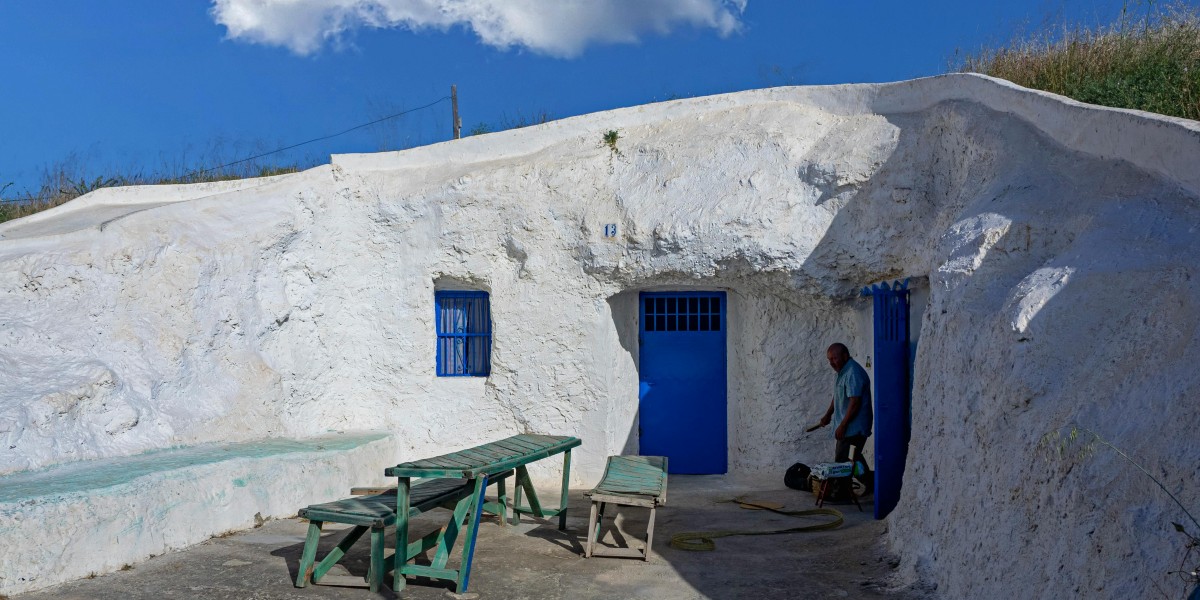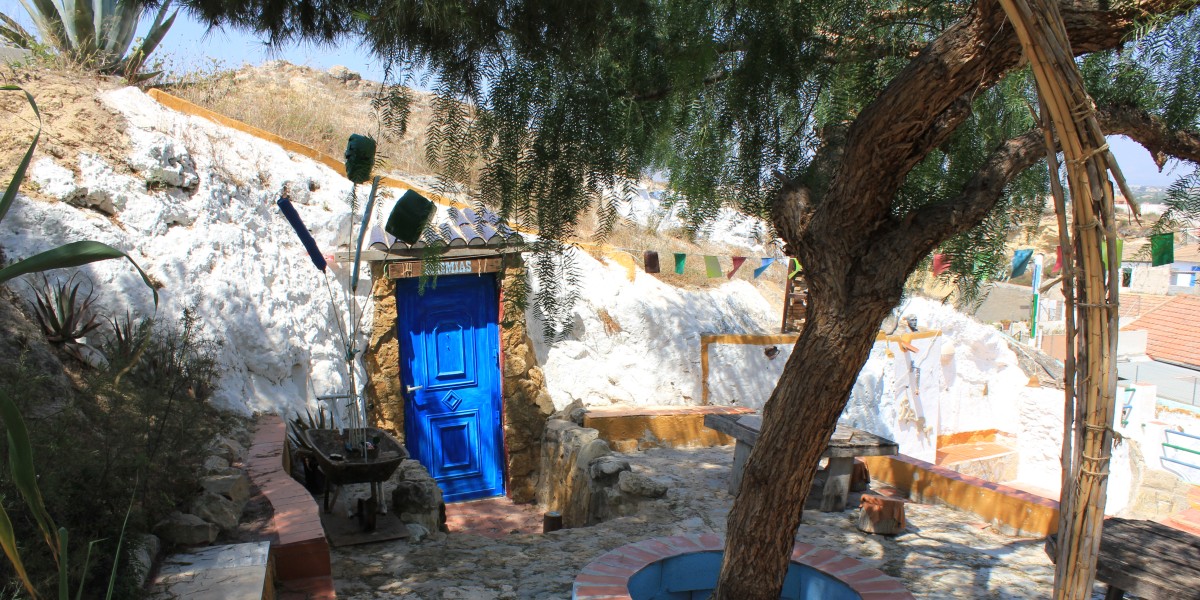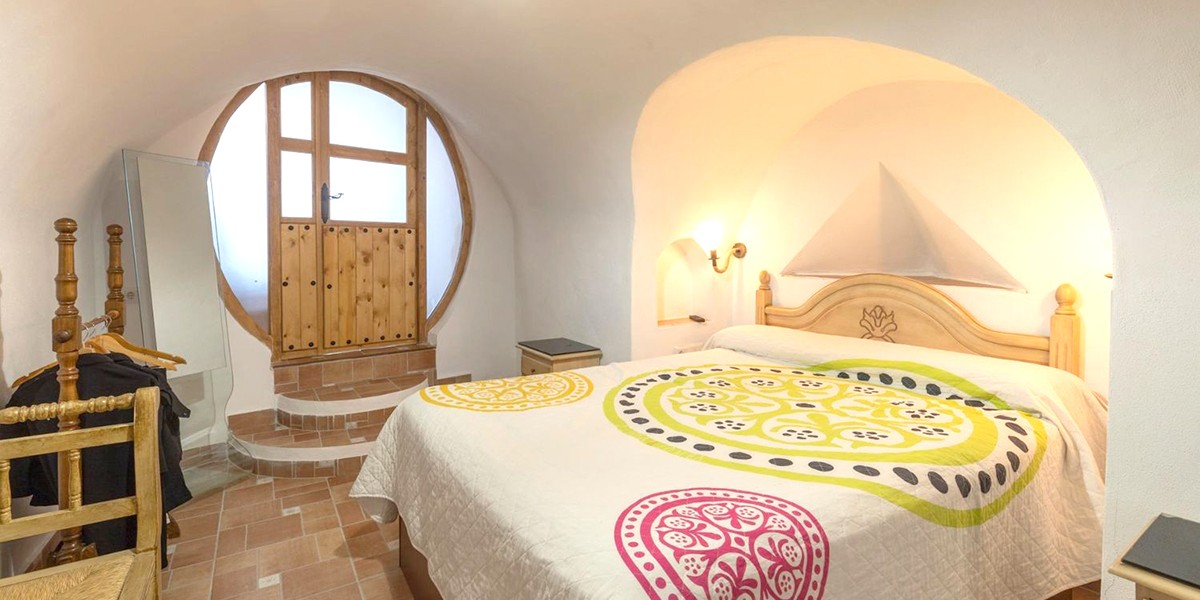
There’s a renewed buzz around cave houses in Spain lately, and it’s not just down to their quirky character or the romance of living in the hills. With energy prices stubbornly high and summers getting hotter every year, a growing number of people are cottoning on to the practical side of these traditional homes.
Where are cave houses in Spain?

Cave houses in Spain are mostly found in the southern regions, particularly in Andalusia. The area around Granada is especially known for these dwellings. Towns such as Guadix, home to more than 2,000 cave houses, Purullena, and Baza are known for their labyrinths of cave dwellings, thanks to the soft hillsides and cave-friendly geology. There are also smaller pockets in provinces like Almería, and scattered examples in parts of Murcia and Castilla-La Mancha.
Cave houses in Spain: a brief history
Spain’s cave houses have a story that goes back thousands of years, rooted in the use of the region’s soft hills and ravines for practical shelter. Early communities, recognising how the earth kept the extremes of heat and cold at bay, started carving out spaces that worked with the landscape rather than fighting it. By the Middle Ages, these homes became a hallmark of areas like Andalusia, especially as populations grew and waves of different cultures—like the Moors—introduced their own construction methods.
Do people still live in caves in Spain?

It’s fair to say cave living in Spain is alive and well, with options running from rustic to refreshingly up-to-date. In places like Guadix and Baza, entire neighbourhoods are known for their cave houses, many of which have been in the same families for generations. Wander these towns and you’ll see everything from centuries-old, whitewashed caves full of character, to clever modern renovations kitted out with WiFi and designer kitchens.
And it’s not just about preserving history either—some builders are still shaping new cave homes right into the hillsides, sticking firmly to that timeless Andalusian style but adding proper insulation, electricity, and all the little luxuries you’d want.
Pros and cons of cave houses

There's a lot to love about cave living, but it's wise to go in with your eyes open. Here’s a straightforward look at the good and the not-so-good.
Choosing to move into a cave house certainly comes with its benefits:
- Year-round comfort and lower bills: the thick, natural insulation of the rock keeps the temperature inside surprisingly stable. You won't need air con in summer nor much heating in winter, which can save you a fair bit on energy bills.
- Eco-friendly living: cave homes are about as sustainable as it gets. They are built from the landscape itself, have a very low carbon footprint, and blend into the scenery with minimal visual impact.
- A unique and quiet lifestyle: for many, the appeal is escaping the noise and expense of city life. Cave houses offer a peaceful, simpler way of living that’s deeply connected to the natural surroundings.
However, it's not all rainbows and sunshine. There are disadvantages to taking on the cave lifestyle:
- Potential for damp (but it's manageable): in southern Spain, the dry climate and low rainfall work in your favour. Properly maintained cave houses here rarely have issues, and good ventilation keeps everything fresh and dry.
- Natural light can be limited: by their very nature, rooms deeper inside the cave won't get much direct sunlight. Most layouts are cleverly designed to have living areas at the front, but bedrooms and back rooms can be quite dark.
- Unusual layouts: you have to work with the shape of the cave, which means you might find quirky room shapes and layouts. You can’t just knock down a wall to create an open-plan space, so renovations require a bit more creative thinking.
Cave houses for sale in Spain

Spain has a steady supply of cave homes for sale, with everything on offer. Some places wouldn’t look out of place in a design magazine, while others are small and charming, almost like stepping into a fairytale. You’ll spot luxury conversions with panoramic views and modern comforts, as well as little hobbit-style hideouts tucked among the hills. Take a glance at some of the coolest cave houses currently on the market—and see if you're tempted to take the plunge down underground.
